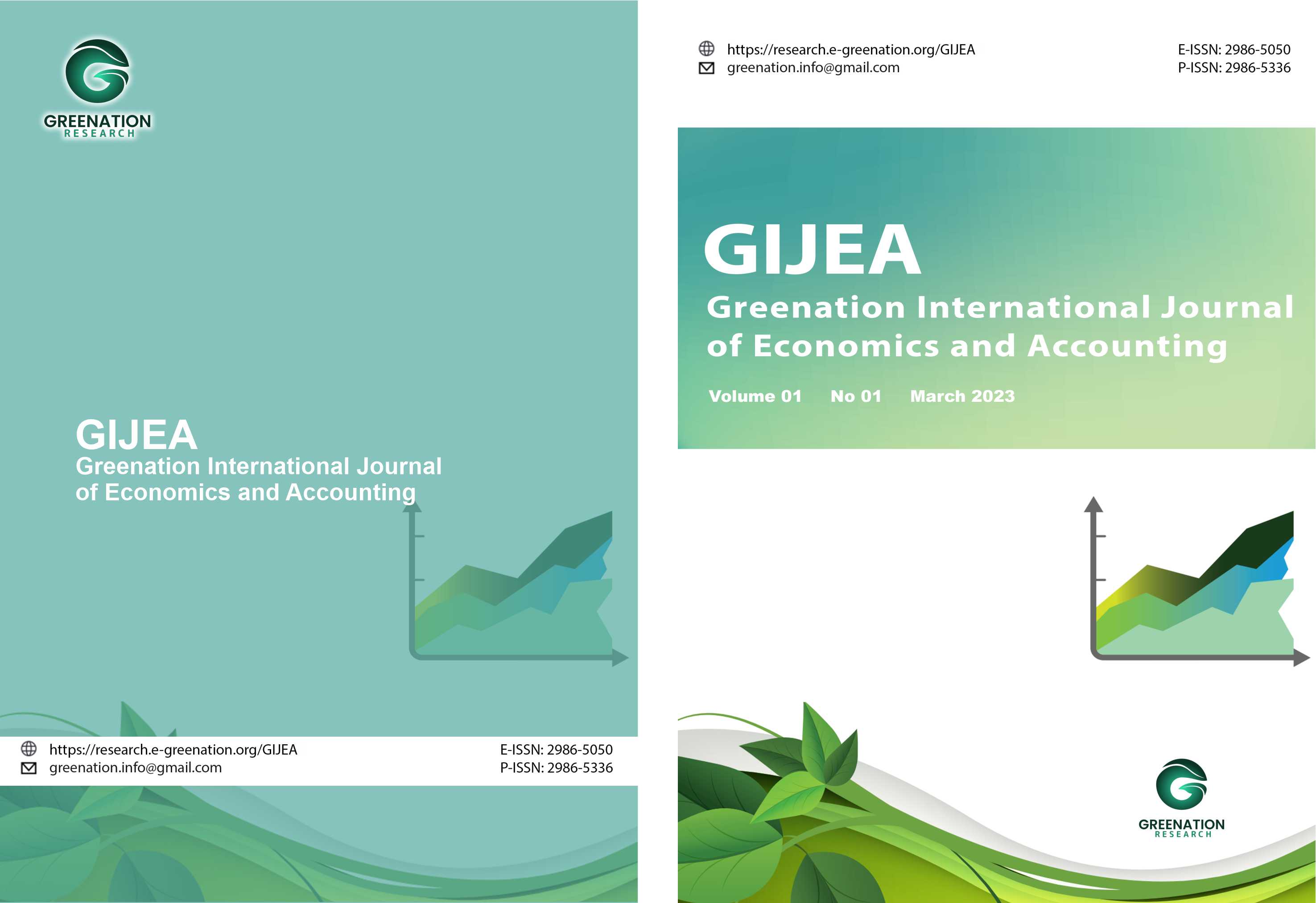Impact of Demographics on Consumer Preferences in Online Shopping: An Analysis of Age, Gender, and Education Factors
DOI:
https://doi.org/10.38035/gijea.v1i4.303Keywords:
Online Shopping, Consumer Behavior, Demographics, e-commerce preferencesAbstract
This study explores the influence of demographic factors-age, gender, and education level-on consumer preferences and behaviors in online shopping. Through a quantitative analysis using ANOVA, data from 119 participants highlight that age and education level significantly impact perceptions of platform selection, product security, and the importance of reviews, while gender differences are less pronounced. Key findings indicate that younger consumers value convenience and variety, while higher-educated users prioritize security and trust in reviews. These insights are critical for e-commerce platforms aiming to enhance user experience and drive engagement by aligning their strategies with demographic-specific needs. The study provides a foundation for further research on evolving consumer behaviors and offers global relevance as e-commerce continues its rapid expansion.
References
Agrawal, S. R., & Mittal, D. (2024). Cashier-free checkout system: to improve in-store shopping experience. International Journal of Retail & Distribution Management, 52(5), 612–625. https://doi.org/10.1108/IJRDM-09-2023-0539
Akroush, M. N., & Al-Debei, M. M. (2015). An integrated model of factors affecting consumer attitudes towards online shopping. Business Process Management Journal, 21(6), 1353–1376. https://doi.org/10.1108/BPMJ-02-2015-0022
Anaza, N., & Zhao, J. (2013). Encounter-based antecedents of e-customer citizenship behaviors. Journal of Services Marketing, 27(2), 130–140. https://doi.org/10.1108/08876041311309252
Barker, J. M., & Brau, R. I. (2020). Shipping surcharges and LSQ: pricing the last mile. International Journal of Physical Distribution & Logistics Management, 50(6), 667–691. https://doi.org/10.1108/IJPDLM-09-2019-0292
Bauer, J. C., Linzmajer, M., Nagengast, L., Rudolph, T., & D’Cruz, E. (2020). Gamifying the digital shopping experience: games without monetary participation incentives increase customer satisfaction and loyalty. Journal of Service Management, 31(3), 563–595. https://doi.org/10.1108/JOSM-10-2018-0347
Bilgihan, A., Kandampully, J., & Zhang, T. (Christina). (2016). Towards a unified customer experience in online shopping environments. International Journal of Quality and Service Sciences, 8(1), 102–119. https://doi.org/10.1108/IJQSS-07-2015-0054
Daroch, B., Nagrath, G., & Gupta, A. (2021). A study on factors limiting online shopping behaviour of consumers. Rajagiri Management Journal, 15(1), 39–52. https://doi.org/10.1108/RAMJ-07-2020-0038
Davis, F., Francis Gnanasekar, M. B., & Parayitam, S. (2021). Trust and product as moderators in online shopping behavior: evidence from India. South Asian Journal of Marketing, 2(1), 28–50. https://doi.org/10.1108/SAJM-02-2021-0017
Dawson, S., & Kim, M. (2009). External and internal trigger cues of impulse buying online. Direct Marketing: An International Journal, 3(1), 20–34. https://doi.org/10.1108/17505930910945714
Fernie, J. (2000). Retail Insights ? Electronic retailing. International Journal of Retail & Distribution Management, 28(7), 1–34. https://doi.org/10.1108/09590552200000003
Frasquet, M., & Ieva, M. (2024). Driving customer inspiration to foster loyalty: a study on showroomers. Journal of Consumer Marketing, 41(5), 583–595. https://doi.org/10.1108/JCM-06-2023-6121
Halan, D., & Singh, E. P. (2023). Enemies to frenemies: coopetition between online and offline retailers amidst crises. International Journal of Retail & Distribution Management, 51(4), 425–443. https://doi.org/10.1108/IJRDM-06-2022-0208
Han, B., Kim, M., & Lee, J. (2018). Exploring consumer attitudes and purchasing intentions of cross-border online shopping in Korea. Journal of Korea Trade, 22(2), 86–104. https://doi.org/10.1108/JKT-10-2017-0093
Hong, W. (2017). The Balanced Scorecard Study on the Corporate Social Responsibility of Electronic Commerce. In Modern Organisational Governance (Vol. 12, pp. 161–185). Emerald Publishing Limited. https://doi.org/10.1108/S2043-052320170000012008
Jalil, F., Yang, J., Al-Okaily, M., & Rehman, S. U. (2024). E-commerce for a sustainable future: integrating trust, green supply chain management and online shopping satisfaction. Asia Pacific Journal of Marketing and Logistics, ahead-of-print(ahead-of-print). https://doi.org/10.1108/APJML-12-2023-1188
Jiang, P., & Rosenbloom, B. (2005). Customer intention to return online: price perception, attribute?level performance, and satisfaction unfolding over time. European Journal of Marketing, 39(1/2), 150–174. https://doi.org/10.1108/03090560510572061
Johnson, O., & Ramirez, S. A. (2021). The influence of showrooming on Millennial generational cohorts online shopping behaviour. International Journal of Retail & Distribution Management, 49(1), 81–103. https://doi.org/10.1108/IJRDM-03-2020-0085
Kim, E. B., & Eom, S. B. (2002). Designing effective cyber store user interface. Industrial Management & Data Systems, 102(5), 241–251. https://doi.org/10.1108/02635570210428276
Kim, H.-J., & Han, S. M. (2023). Uncovering the reasons behind consumers’ shift from online to offline shopping. Journal of Services Marketing, 37(9), 1201–1217. https://doi.org/10.1108/JSM-02-2023-0060
Klaus, P. (2013). The case of Amazon.com: towards a conceptual framework of online customer service experience (OCSE) using the emerging consensus technique (ECT). Journal of Services Marketing, 27(6), 443–457. https://doi.org/10.1108/JSM-02-2012-0030
Krishnamurthy, S. M., & Venkitachalam, K. (2023). The changing face of retailing, 1980–2020. Journal of Strategy and Management, 16(1), 41–55. https://doi.org/10.1108/JSMA-02-2022-0035
Kumar, S., Eidem, J., & Noriega Perdomo, D. (2012). Clash of the e?commerce titans. International Journal of Productivity and Performance Management, 61(7), 805–830. https://doi.org/10.1108/17410401211263872
Kumar, V., Umashankar, N., & Park, I. (2014). Tracing the Evolution & Projecting the Future of In-Store Marketing. In Shopper Marketing and the Role of In-Store Marketing (Vol. 11, pp. 27–56). Emerald Group Publishing Limited. https://doi.org/10.1108/S1548-643520140000011000
Lee, K. Y., Jin, Y., Rhee, C., & Yang, S.-B. (2016). Online consumers’ reactions to price decreases: Amazon’s Kindle 2 case. Internet Research, 26(4), 1001–1026. https://doi.org/10.1108/IntR-04-2014-0097
Liu, C., & Hong, J. (2016). Strategies and service innovations of haitao business in the Chinese market. Asia Pacific Journal of Innovation and Entrepreneurship, 10(1), 101–121. https://doi.org/10.1108/APJIE-12-2016-012
Liu, Y., & Tang, X. (2018). The effects of online trust-building mechanisms on trust and repurchase intentions. Information Technology & People, 31(3), 666–687. https://doi.org/10.1108/ITP-10-2016-0242
Malekpour, M., Sedighi, M., Caboni, F., Basile, V., & Troise, C. (2023). Exploring digital transformation and technological innovation in emerging markets. International Journal of Emerging Markets, ahead-of-print(ahead-of-print). https://doi.org/10.1108/IJOEM-02-2023-0147
Nigam, A., Behl, A., Pereira, V., & Sangal, S. (2023). Impulse purchases during emergency situations: exploring permission marketing and the role of blockchain. Industrial Management & Data Systems, 123(1), 155–187. https://doi.org/10.1108/IMDS-12-2021-0799
Ozturkcan, S., & Okan, E. Y. (Eds.). (2018). Index. In Marketing Management in Turkey (pp. 455–464). Emerald Publishing Limited. https://doi.org/10.1108/978-1-78714-557-320181029
Park, J., Shin, W., Kim, B., & Kim, M. (2024). Spillover effects of data breach on consumer perceptions: evidence from the E-commerce industry. Internet Research, ahead-of-print(ahead-of-print). https://doi.org/10.1108/INTR-11-2022-0898
Petrescu, M. (2011). Online price dispersion – more than imperfect information. Journal of Product & Brand Management, 20(7), 541–548. https://doi.org/10.1108/10610421111181840
Downloads
Published
How to Cite
Issue
Section
License
Copyright (c) 2024 Andino Maseleno, Jainish Gami, Nirav Patel, Vibhu Aghera, Nishit Patel, Manthan Gondaliya, Rahul Chauhan

This work is licensed under a Creative Commons Attribution 4.0 International License.
Copyright :
Authors who publish their manuscripts in this journal agree to the following conditions:
- Copyright in each article belongs to the author.
- The author acknowledges that the GIJEA has the right to be the first to publish under a Creative Commons Attribution 4.0 International license (Attribution 4.0 International CC BY 4.0).
- Authors can submit articles separately, arrange the non-exclusive distribution of manuscripts that have been published in this journal to other versions (for example, sent to the author's institutional repository, publication in a book, etc.), by acknowledging that the manuscript has been published for the first time at GIJEA.

























